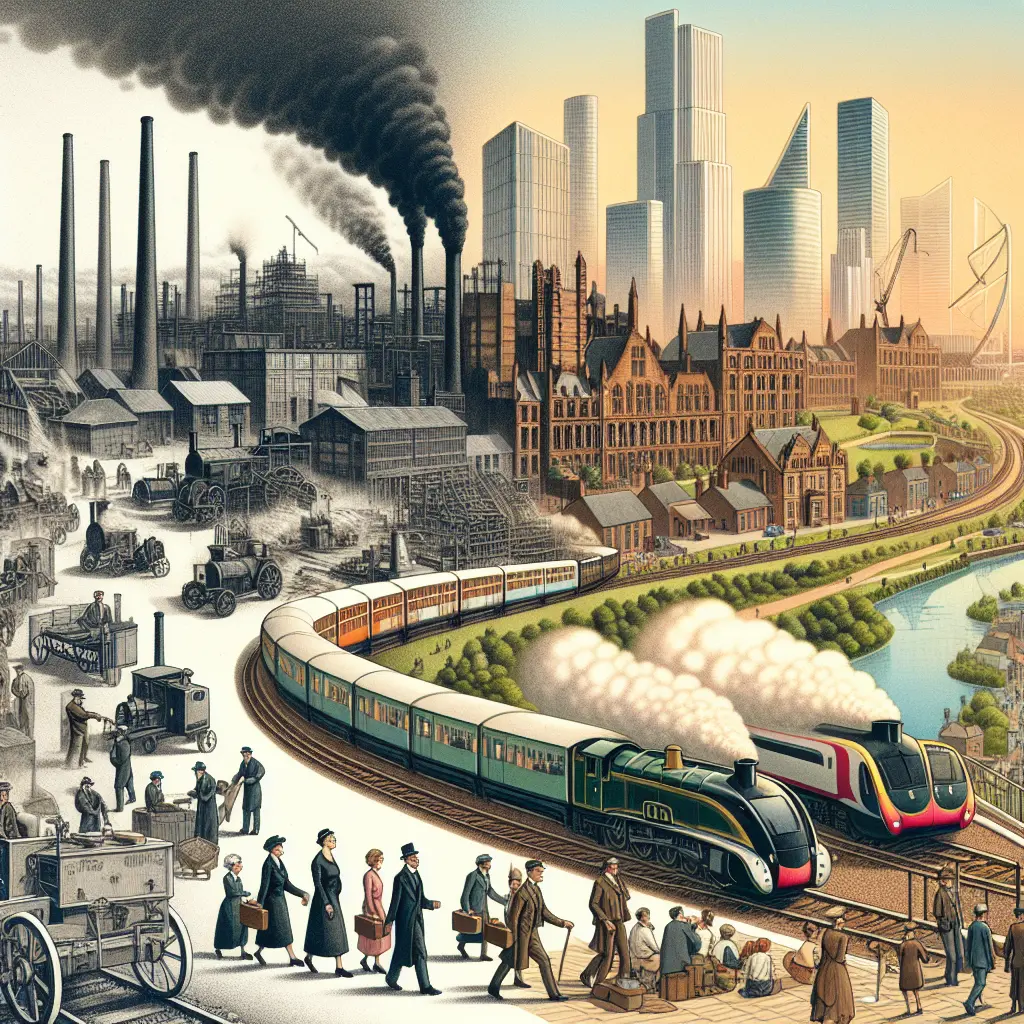The British Industrial Revolution stands as a pivotal chapter in global history, fundamentally shaping the contours of modern UK infrastructure. This transformative era not only revolutionized industries but also laid the groundwork for the evolution of British industry, leaving an indelible mark on the UK's urban landscape and technological progress.
As we traverse the history of UK infrastructure, the profound impact of the Industrial Revolution becomes unmistakably clear, influencing everything from British engineering history to contemporary architectural innovations.
This legacy is vividly seen in the modern British industry influences that pervade today’s infrastructure development. The UK's industrial heritage is showcased through iconic sites and technological advancements that continue to inspire awe.
The evolution of UK transportation, highlighted by the storied UK railways history and the intricate British canal systems, underscores the ingenuity and ambition that characterized this period. These developments not only transformed how people and goods moved but also spurred unprecedented urban growth, shaping the trajectory of UK urban development.
As we explore the Industrial Revolution's impact on Britain, the enduring legacy of British architectural innovations and infrastructure advancements becomes a testament to the era’s transformative power. From industrial heritage sites in the UK to modern marvels of British infrastructure development, the threads of history weave a narrative rich in progress and innovation.
The Legacy of the British Industrial Revolution on Modern UK Infrastructure
The British Industrial Revolution serves as a cornerstone in understanding the evolution of modern UK infrastructure. This period, marked by rapid industrialization and technological advancements, set in motion a series of developments that continue to influence the UK's landscape today.
As we delve into the legacy of the Industrial Revolution, we see its imprint not only in the physical infrastructure but also in the socio-economic fabric of Britain.
The Engine of UK Transportation Evolution
One of the most profound impacts of the Industrial Revolution on modern UK infrastructure is evident in the transportation sector. The advent of steam-powered locomotives revolutionized travel and commerce. Today, the UK railways history remains a testament to British engineering prowess, with ongoing projects like the High-Speed 2 (HS2) rail network promising to further enhance connectivity across the country.
British Canal Systems: A Historic Lifeline
The British canal systems, once the arteries of industrial Britain, facilitated the transport of heavy goods like coal and steel. These waterways were crucial for industrial growth and urban development. While their commercial use has declined, they have found new life as leisure and tourism attractions, contributing to local economies and preserving an essential part of the UK's industrial heritage.
Architectural Innovations: Then and Now
The Industrial Revolution also heralded significant advancements in British architectural innovations. The introduction of iron and steel as building materials allowed for the construction of iconic structures such as the Crystal Palace and St Pancras Station. These innovations set a precedent for modern architectural design and urban planning.
Contemporary architecture continues to draw inspiration from this era, merging traditional styles with cutting-edge technology. The Shard in London, for instance, combines historical design elements with sustainable building practices, embodying the evolution of British industry and its ongoing impact on UK infrastructure history.
Urban Development: A Legacy of Growth
The rapid industrialization during the Industrial Revolution spurred unprecedented UK urban development. Cities like Manchester and Birmingham transformed into industrial powerhouses, driven by advancements in manufacturing and transportation. This urbanization laid the groundwork for modern city planning and infrastructure management.
Technological Progress: A Continuing Journey
The UK technological progress that began with the Industrial Revolution continues to shape the nation's infrastructure. Innovations in energy production, like the shift from coal to renewable sources, illustrate this ongoing journey. The UK's commitment to achieving net-zero carbon emissions by 2050 is a testament to its dedication to leveraging technological advancements for sustainable infrastructure development.
Preserving Industrial Heritage Sites
As we reflect on the industrial heritage sites UK, preserving these landmarks becomes crucial in understanding our past and inspiring future innovations. Sites like Ironbridge Gorge and Saltaire Village offer glimpses into Britain's industrial past while serving as educational resources and tourist attractions.
Conclusion: A Living Legacy
The legacy of the British Industrial Revolution is deeply embedded in modern UK infrastructure. From transportation advancements and architectural innovations to urban development and technological progress, this era continues to influence contemporary society. As Britain looks towards the future, understanding this legacy provides valuable insights into how past achievements can inform future successes.
Conclusion: Embracing the Industrial Legacy
The legacy of the British Industrial Revolution is undeniably woven into the fabric of modern UK infrastructure. Its influence spans various aspects of contemporary life:
- Transportation Evolution: From steam locomotives to the High-Speed 2 rail network, the spirit of innovation continues to drive transportation advancements.
- Canal Systems: Once vital for industrial logistics, canals now serve as leisure and tourism hotspots, enriching local economies and maintaining historical significance.
- Architectural Innovation: The use of iron and steel in construction during the Industrial Revolution set the stage for modern architectural marvels like The Shard.
- Urban Development: The industrialization of cities laid the foundation for today's urban planning, balancing growth with sustainability.
- Technological Progress: Innovations in energy and technology continue to reflect the ingenuity that began with the Industrial Revolution, as seen in renewable energy initiatives and smart infrastructure.
This historical legacy offers invaluable insights into how past achievements can inspire future successes. By preserving and understanding this heritage, the UK can continue to lead in innovation and sustainable development, ensuring that its infrastructure not only honors its history but also paves the way for future generations.










Leave a Comment